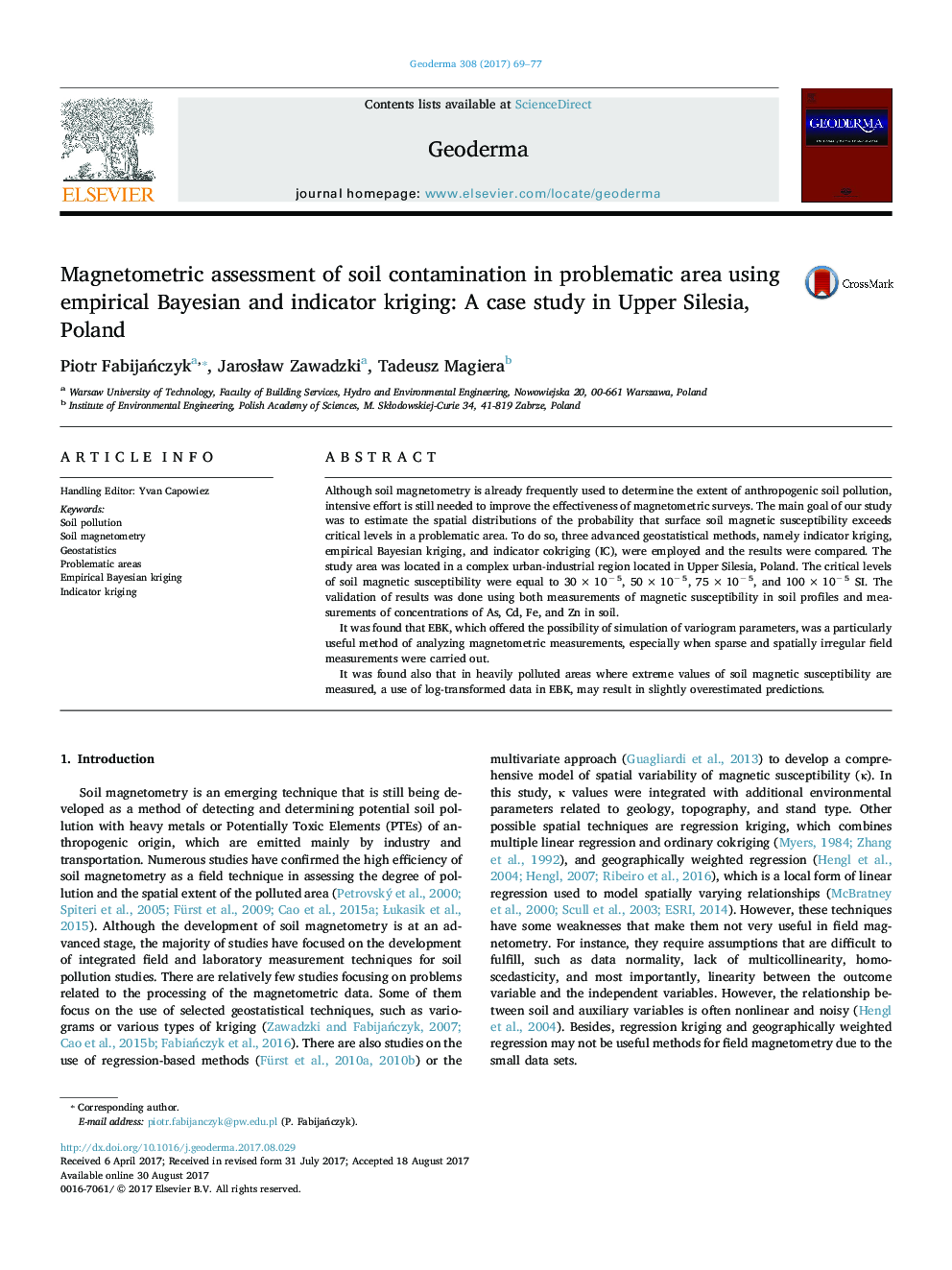| Article ID | Journal | Published Year | Pages | File Type |
|---|---|---|---|---|
| 5770551 | Geoderma | 2017 | 9 Pages |
â¢Estimate the probability that soil magnetic susceptibility exceeds critical levels.â¢Probability maps made it possible to identify potentially contaminated areas.â¢Indicator cokriging can integrate surface and in-profile magnetometric measurements.
Although soil magnetometry is already frequently used to determine the extent of anthropogenic soil pollution, intensive effort is still needed to improve the effectiveness of magnetometric surveys. The main goal of our study was to estimate the spatial distributions of the probability that surface soil magnetic susceptibility exceeds critical levels in a problematic area. To do so, three advanced geostatistical methods, namely indicator kriging, empirical Bayesian kriging, and indicator cokriging (IC), were employed and the results were compared. The study area was located in a complex urban-industrial region located in Upper Silesia, Poland. The critical levels of soil magnetic susceptibility were equal to 30 Ã 10â 5, 50 Ã 10â 5, 75 Ã 10â 5, and 100 Ã 10â 5 SI. The validation of results was done using both measurements of magnetic susceptibility in soil profiles and measurements of concentrations of As, Cd, Fe, and Zn in soil.It was found that EBK, which offered the possibility of simulation of variogram parameters, was a particularly useful method of analyzing magnetometric measurements, especially when sparse and spatially irregular field measurements were carried out.It was found also that in heavily polluted areas where extreme values of soil magnetic susceptibility are measured, a use of log-transformed data in EBK, may result in slightly overestimated predictions.
